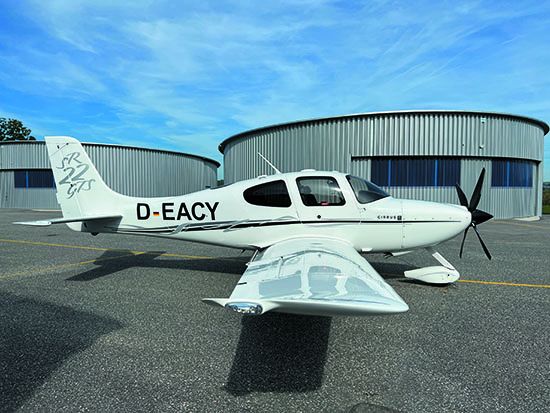With a composite structure, a parachute and sports-sedan-like cabin ergos, the Cirrus SR22 is one of the most modern piston singles, demanding intensive training and aggressive maintenance. And with the earliest SR22 models nearly over 20 years old, there’s a larger variety of used models to pick from. But now is not the time to buy any SR22 on the cheap—Cirrus models are in demand.
The Fall 2022 Aircraft Bluebook lists a normally aspirated SR22-GS at $410,000, which is almost what it cost when delivered new back in 2010. Models with new engines, upgraded avionics and paint and interior mods sell for a lot more.
But before getting in line for a Cirrus to call your own, get an insurance quote, have a plan for getting the right training and be ready to commit when you get to the bidding stage—newly listed SR22s sell fast.
HIGH BRAND SATISFACTION
You’ve likely heard the success story several times over. Cirrus Design was known in the experimental aircraft world during the 1990s for its VK30 pusher kit, an innovative composite design that gained some traction in the kit market. By the mid-1990s, Cirrus principals Alan and Dale Klapmeier developed a new vision, reasoning that the time was right for a high-performance, composite fixed-gear single that anyone could fly safely.
It wasn’t a cakewalk by any stretch, but ultimately the entry-level SR20 and flagship SR22 in their various iterations have proven hot sellers (new and used), good performers and with unusually loyal and enthusiastic customers. Buy a Cirrus and you’re part of a family of owners and pilots who generally have high product satisfaction. The loyalty ended up paying huge dividends when Cirrus entered the personal jet world with the SF50 Vision Jet—a logical step-up from the SR22.
Part of the draw is the Cirrus CAPS (Cirrus Airframe Parachute System), of course, which is responsible for hundreds of saves. As we go to press in October 2022, there was a first and successful CAPS activation in the Vision Jet—which spared the lives of all three onboard after an approach attempt in foul weather. The CAPS has been successful in selling a whole lot of SR pistons, and likely the CAPS-equipped Vision, too.
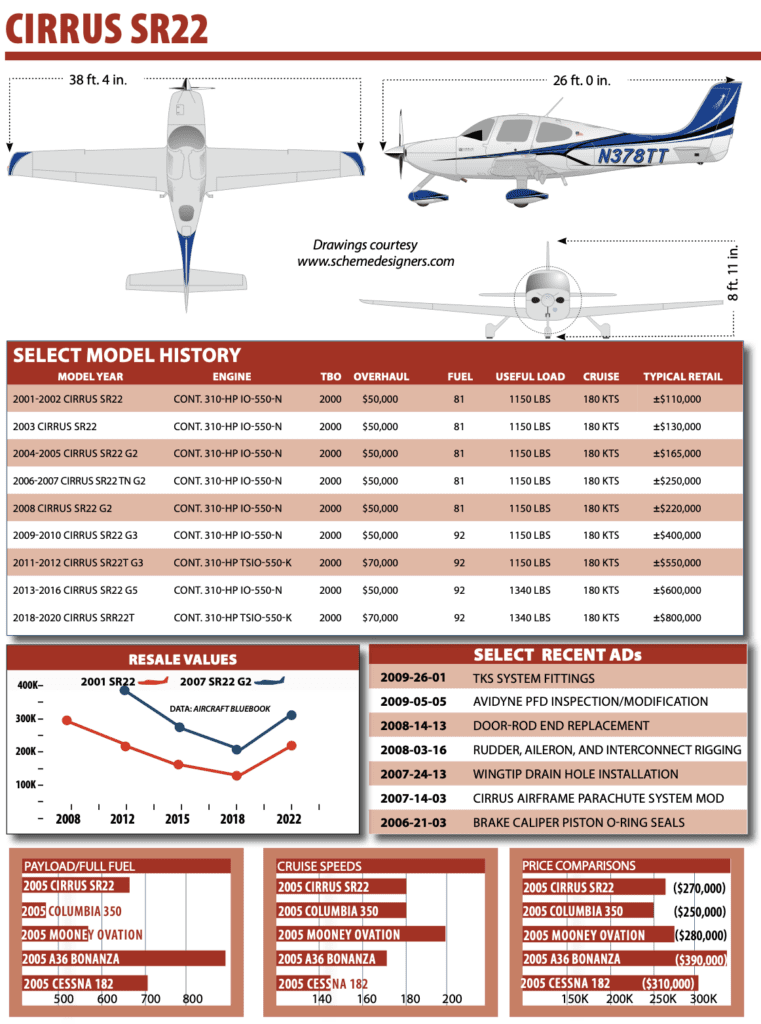
MATURING DESIGN
The SR line started with the SR20 (also in demand in the current market), but the big seller—the SR22—was released as the 2001 model. The G1 SR22 appealed for speed, although the SR20 (popular for training) wasn’t exactly slow. The SR22 came in with a 310-HP Continental IO-500-N, arguably one of Continental’s best-ever powerplants, a three-blade prop and more payload, even though the basic airframe is largely the same as the SR20. Operating simplicity was always key.
To this day, Cirrus still uses the two-lever power control arrangement, with a throttle and mixture lever but no prop control. The RPM setting is handled by a cable-and-cam arrangement that sets the prop for takeoff and cruise. The SR22 airframe ended up being slightly different than the SR20’s. The wingtips are 18 inches longer, the rear elevator is larger and the landing gear was moved inboard to give more ground clearance for the prop. Although identical in section to the SR20, the SR22’s main spar was substantially beefed up and accommodates more fuel, 81 gallons in the earlier airplanes (92 in later ones, starting with the G3, which has the new wing and a carbon fiber spar). Compare this to the 60 gallons of fuel capacity in the SR20. The SR22’s energy-absorbing seats were also modified to account for the airplane’s higher weight. And over the years, Cirrus put a sharp focus on crashworthiness. Later models have high-G seating and seatbelt airbags, complementing a cockpit that has limited flail space, thanks to the side-stick controllers. It’s a tough airframe that generally protects occupants during a CAPS drop.
Cirrus did full-scale crash testing of prototype fuselages at NASA’s Langley, Virginia, facility that revealed that even at high impact loads, the composite fuselages remain relatively intact. Descent under canopy could be as high as 28 feet per second. That’s a vertical descent of 1680 FPM/19 MPH. A ride to touchdown under the CAPS canopy won’t be something you’ll want to repeat, although the vast majority of real-world deployments have yielded no or minor injuries.
The fuselages are laid up in molds in two halves, with the two shells joined and then cured in an autoclave. The wings are similarly constructed and are of a single piece built around and bonded to a massive spar. This forms a strong torsion box that has proved itself we’ll in the rigors of real-world service. But unlike Cessnas and Diamonds, de-winging is a challenge, given the single-piece structure.
On a side note, along with Diamond, Cirrus pioneered high-volume composite construction for light aircraft and if you’ve ever walked the Cirrus production floor in Duluth, Minnesota, you know the company has nailed production efficiency.
Control surfaces are conventional riveted aluminum, with a combination of push-pull tubes, cables and bellcranks and a sidestick controller rather than a yoke or center stick. Most of the control circuitry lives under the floorboards, where it’s accessible via good inspection panels.
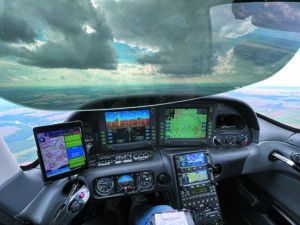
SYSTEMS, AVIONICS
The SR22 has a castering nosewheel, with differential braking. Castering nosewheels work just fine with the right touch, but have the downside of chewing up brake pads and, in the case of the SR22, leading to several brake-induced fires in early models. This led to an AD requiring periodic O-ring replacement and a brake temperature inspection hole. Some owners say brake wear isn’t an issue if you simply stay off the binders during taxi. Cirrus eventually switched to Beringer wheels and brakes, which results in hands-down the best braking performance we’ve flown in a piston single. As for the castering nosewheel, it makes the airplane a dream to taxi into a parking spot, but sometimes a nightmare to hand-push into a hangar.
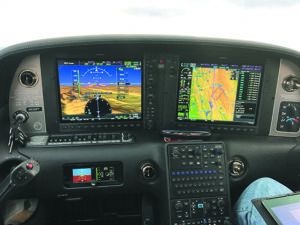
The fuel system in the SR22 consists of wet cells in each wing. These are plumbed to a single tank switch located on a console between the two pilot seats, which is in plain view and situated near the fuel level gauges. Owners of G1 and G2 models complain of inaccurate fuel gauges, and some G2 models have been upgraded to the aftermarket digital fuel sender and control head upgrade by CIES. While the fuel is relatively well-protected in the wings, it appears to be not as well-protected as in other aircraft, specifically the Diamond line. Our review of accidents over the years revealed a higher incidence of post-crash fire in the SR22 than in Diamonds.
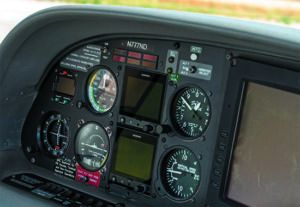
SR22s don’t have vacuum systems, but instead dual alternators and dual battery systems. There’s plenty of redundancy in the electrical system, with a main and essential bus. Both alternators are gear driven, one on the front of the engine and one on the rear accessory case. Given the service history of Continental alternators, our druthers is to have one belt driven. In any case, we think the all-electric SR22 remains a significant advance over anything to do with vacuum instruments.

As for avionics, you’ll find a variety of configurations. First-gen models had round-gauge flight instruments, a single big-screen MFD and Garmin GNS 430 navigators in the radio stack. You’d be hard-pressed to find a first-gen SR22 that hasn’t been worked over with some new avionics. Aspen retrofits are popular and now Garmin has secured a handful of STCs for retrofit glass. Beware of models with Sandel’s SN3308 EHSI.
You’ll find S-TEC autopilots in these early airplanes (and in later-gen non-G1000 models) and we prefer ones retrofitted with Avidyne’s digital DFC90 autopilots. From our experience, S-TEC’s rate-based analog flight computer (which uses the turn coordinator as a roll reference) wasn’t a good match for the SR-22’s performance. This is a worthy upgrade, made somewhat easier by retaining the S-TEC servos and swapping out the computer/controller. Garmin’s GFC 500, TXi and GI 275 are also popular upgrades.

The second-gen airplanes had a full Avidyne Entegra suite with Garmin GNS navigators and digital transponder. Avidyne said it is working on an Entegra replacement for the Cirrus fleet with the Vantage PFD/MFD suite.
Garmin’s G1000 Perspective came in the SR22-G3 in 2008 (some G3s still had Avidyne) and features included synthetic vision, the integrated GFC 700 autopilot and in some airplanes, the infrared-camera- equipped EVS Enhanced Vision System. 2017 and newer models have the G1000 Perspective+ version, with crisper displays, faster processors, Surface Watch runway guidance, visual approaches, a Garmin Flight Stream wireless system and now Cirrus IQ, with an app that dials into the airplane’s avionics via cellular transceiver, plus flight and systems data logging/cloud storage capability. These later SR22-G6 models sell (quickly) for north of $1 million.

TKS ice protection was available as an option in the late 2002 SR22s, but it wasn’t approved for known icing. That option didn’t appear until 2009.
IMPROVEMENTS, TURBOS
Cirrus discovered that a substantial number of buyers would replace a recent SR22 if a newer model had noticeable improvements—as is the case on a regular basis. We know of many Cirrus owners who have bought two or three new airplanes in the space of five years or less—even in recent times of uncertainty. It’s one reason for the huge demand. Some improvements are major, while others just add to the SR22’s so-called flying sports sedan vibes. Speaking of vibes, a 6-point engine mount came along with the SR22-G2 for the 2004 model year, along with a redesigned cowl, a new prop, a higher-end interior and improved door latches.
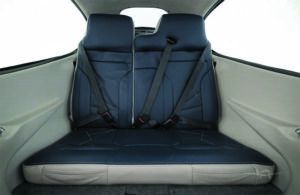
Cirrus rolled out one of its bestsellers ever in the form of the turbonormalized SR22 for the 2007 model year. Cirrus had heard its customers ask for a turbocharged SR22 and Dale Klapmeier once told us the company had considered it from early on. Unfortunately, Cirrus couldn’t get its in-house developed turbo to run cool enough, so it never brought the product to market. Instead, it contracted with Tornado Alley Turbo to install a turbonormalized system under STC. These airplanes proved so popular that for a time, they outsold the normally aspirated version by a margin of two to one. There’s also the Forced Aeromotive FAT supercharger mod, with a reported 8- to 21-knot speed increase above 12,000 feet. Still, the most popular new model to sell today is the turbocharged SR22T, introduced in 2010. The Continental TSIO-550-K has a 2000-hour TBO.
More improvements came in the late 2000s models with the SR22-G3, including a redesigned wing with 92 gallons fuel capacity and a carbon fiber spar, the removal of the aileron-rudder interconnect found on earlier models and improved environmental and interior ergos.
The SR22-G5 came along in 2013 (Cirrus skipped the G4 nomenclature) bringing a 500-pound gross weight increase. Useful load went from 3400 pounds to 3600. To accommodate the new gross weight increase, Cirrus beefed up the main spar, strengthened the landing gear and added extra layers of composites to the airframe. Perhaps what we like best is the faster 50 percent flap deployment speed—150 knots instead of 119—making the airplane easier to slow for landing. To maintain current stall speeds at higher weights, flap deflection was increased to 35.5 degrees. Due to the higher loads from increased deflection angles, the flap components had to be strengthened. And more weight meant a redesigned CAPS parachute.
LED wingtip lights and tubeless tires came in 2014 and the Mid-Continent SAM electronic standby instrument and cabin USB ports were put in 2015 models. ADS-B and angle-of-attack systems came in 2016 models, plus a new key fob for controlling the door locks from outside the plane.
2017 brought the G6, which ushered in Whelan-designed Spectra wingtip and ramp lighting, plus the altitude-sensing Halo automated wig-wag function. The Garmin Perspective+ avionics got smarter and for 2020 included a takeoff and climb flaps warning system. Cirrus really stepped up its paint and interior work from earlier models. The Carbon model has sports-car-like styling, and there’s also the more posh Platinum and Rhodium schemes. There’s also the Arrivee Special Edition version.
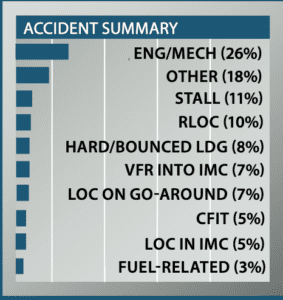
After reviewing the 100 most recent Cirrus SR22 accidents we were struck by the very low number of fuel-related accidents—good fuel gauges (in later models), perhaps—and the combination of what we consider to be an above-average number of engine power loss events for mechanical reasons tied in with the fact that only a small fraction of them resulted in injuries or fatalities.
In 21 of the 26 engine power loss events, the pilot (or a passenger) activated the CAPS. Every occupant survived the landing under canopy, even when high winds dragged or flipped the airplane after two of the touchdowns. There were occasional minor injuries involved—a strikingly better result than we see when looking at engine-out events in aircraft that are not equipped with a ballistic parachute. In those aircraft we normally see at least a half-dozen fatalities for 20 engine-out accidents.
In the five engine power loss accidents where the CAPS was not activated there were injuries and fatalities. We note that the aircraft was too low to use the CAPS in two of the accidents.
We noted that where the cause of the engine power loss was determined, it was almost invariably due to improper maintenance. Cylinders were not torqued, fuel fittings not tightened, ADs not complied with and fuel flow set far too high at full power (riching out the engine).
There were five loss of control (LOC) accident in IMC, one of which was due to a pilot’s complete reliance on the autopilot and an inability to program it. Three of the five LOC events had a happy ending as the pilot made use of the CAPS and all involved survived. The other two IMC LOC accidents involved airframe icing. We do not know why the pilots elected not to use the one last chance provided for them by Cirrus.
We were concerned by the overall number of landing accidents—there was only one runway overshoot, but nine pilots lost control after touchdown on landing, seven lost control after initiating a go-around and eight tore up their SR22s after a hard or bounced landing that usually developed into PIO porpoising. We think recurrent training in crosswind landings is a must for Cirrus pilots.
There were seven crashes after Cirrus pilots elected to attempt to fly VFR into IMC—almost always willingly launching into weather they knew was IMC. The NTSB discussed the anti-authority attitude of one of the dead pilots in its report of the accident, and we found ourselves opining that it was a factor in at least half of the others. We also noted that none of the optimists who decided to fly without visual references took advantage of the CAPS when things went south—and almost all had sufficient altitude to do so.
One SR22 pilot elected not to click on the runway lights during a night landing. He hit the windsock prior to touchdown.
After a pilot and the passenger behind him unbelted to get something under the pilot’s seat, the right seat passenger tried to help by adjusting his seat. He then grabbed his side stick and cycled it rapidly three times. The pilot and rear seat passenger hit the ceiling repeatedly, resulting in serious injuries to the passenger.
UPKEEP, REFURBS

The SR22 has a total of 14 airworthiness directives, a fair to middling score. None of these are especially onerous or expensive, but some do impact safety, such as 2008-14-13, which requires door hinge replacement to prevent the door from departing the airplane; 2008-06-28, which addresses significant Avidyne PFD issues; and 2007-14-03, which requires a modification of the CAPS activation system. And speaking of CAPS, the earliest airplanes are we’ll at the point of needing the 10-year repack/recertification. How much? Plan on about $14,000 all in, if you go with an overhauled unit, but close to $16,000 for a new one. G1 aircraft require costly composite repair and paint work following a repack, but the CAPS is accessed through the baggage area in G2 models and beyond, eliminating the need to break the structure to gain access.
For aging models, the respected used Cirrus dealer—Ohio-based Steel Aviation (www.steelaviation.com)—came out with the Steel Edition Cirrus restoration process. With a five-year spinner-to-tail warranty, Aircraft Bluebook adds nearly a $300,000 premium for it. Two other dealers—Aerista Aircraft and Lone Mountain Aircraft—are part of the Cirrus pre-owned sales network, selling select low-time and well-cared-for SR22 models with a certified pre-owned status.
OWNER FEEDBACK
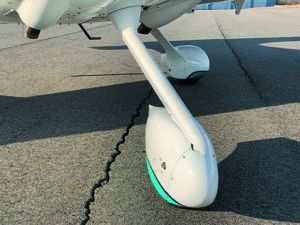
I bought my SR22-G2 in 2013, stepping up from a Piper Warrior with the intention of having an affordable IFR airplane to regularly visit my company. It’s a four-hour drive to the Czech Republic from Munich, Germany. There’s a 2000-foot grass strip at the destination, which works perfectly with the SR22, even on hot days and close to MTOW.
Transitioning from the Warrior with its low wing loading took me a while and I had to get used to the higher speeds and glass cockpit. With Embark, Cirrus has a great free training program for buyers of all Cirrus models no matter how old the airplane is. It pays up to 10 hours of instruction by a Cirrus Standardized Instructor Pilot, or CSIP. This airplane is easy to fly but only if flown on speed and by the numbers every time, especially for approach and landing. I fly mine into grass strips as short as 1600 feet—not a problem with the right training.
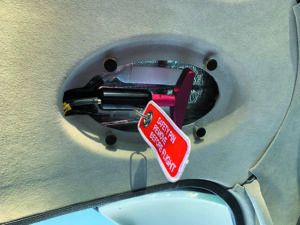
I upgraded my G2 with Avidyne’s DFC90 autopilot, Garmin WAAS navigators, plus a four-blade prop and it’s a dream to fly. For low maintenance costs and because there’s only smaller mountains on my typical routes, I decided on the normally aspirated model. It gives me 165-170 knots at 10,000 feet at a fuel flow of around 14 GPH, lean of peak. I occasionally cross the Alps to the Mediterranean, which works fine between 12,000 and 16,000 feet, but I might go for a turbonormalized version if I did it often.
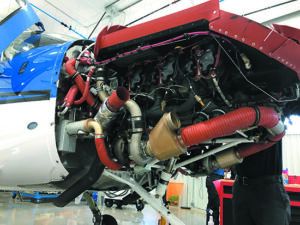
This airplane is a lot of fun to fly and I especially love the avionics for precision approaches. The optional air conditioning and roomy cabin is great for an occasional family trip.
I am very conservative with my flight planning, but now I’m not sure I’d like to have an airplane without the BRS (CAPS)—it’s reassuring.
As for reliability, it’s been good in the nine years I’ve owned it with only two days of downtime. We changed a cylinder after a borescope inspection showed a slightly burned exhaust valve and low compression at 1400 hours.
Two details I don’t like are lack of manual elevator trim and rudder trim, which would make long climbs to the flight levels much more comfortable, although newer G1000 Perspective-equipped models have yaw damper.
Alex von Croy – Munich, Germany
I have owned a 2006 Cirrus SR22TN since 2018. I went with the Cirrus after looking at glass panel replacements for my A36 Bonanza. Back then, I could get an all-electric glass-panel Cirrus for roughly $200,000 whereas an A36 of this caliber would be $500,000. I was looking for automation, avionics integration and improved positional awareness. I got all that and then some. I was reluctant about the parachute and I saw it as a $15,000 every-decade needless expense. It is that. But, after time with it and hours of training, I see it as an ejection seat for my family. My in-laws are comforted. My wife, who can fly the plane, likes knowing it is there. It is not lost on me that my squinty-eyed view of it was pretty biased. Safety is safety. I’m glad the plane has it now. As we go forward into a world of Garmin Autoland and autonomous autopilots that never err, I am on board with modernity.
The transition from a round- gauge panel to glass cannot be overlooked. I may be a little slow but in honesty, it took a while. I spent the first 20 hours way behind the airplane, the next 30 getting comfortable and a full 150 hours before finally knowing exactly where to look, when and being truly ahead of the avionics. Mind you, I had never flown approach-coupled GPS and for that matter, only used the Direct-To GPS function. Once you have it all sorted, my initial suspicions of a higher level of awareness of all things was achieved. It is remarkable. I still don’t like not controlling the prop, but the single-lever power control works.
The Cirrus is a we’ll thought out machine in major ways, but seems (to me) to be compromised where it did not have to be. First is the landing gear. The mains are springs like a Cessna, durable and predictable. The nosegear, as in many planes, is the Achilles heel. It uses a rubber puck system that would be familiar to a Mooney pilot, requires constant surveillance and prudence dictates careful treatment. Earlier models up to the G2 have a shorter stance, which was made taller in G3 and newer models. No matter, the same but improved system is still in place and ham-fisted flat landings have sent Cirrus owners into engine teardown for prop strikes. The nosewheel is full castering and a joy on the ramp to turn within your wingspan, just straighten it back out before applying a load to it (like during a runup).
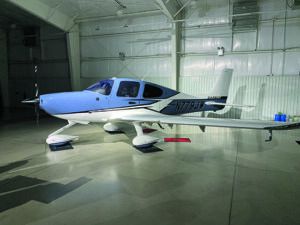
The wings seem stout, but the stall characteristics are totally benign. I could use more gas as it holds 86 gallons. A trip to Florida from Michigan requires speaking Georgian to tank. The plane will cruise in the lower altitudes above 150 knots at 65 percent power with a burn of 12.7 GPH. In theory I could make it we’ll into Florida before tanking, but my experience there leaves me stress-free above the radio towers, frantic approach controllers and most bug smasher traffic until my southern destination with half tanks (easy) at landing. The wings are deiced with TKS and it works great; this one is not FIKI as it has a single TKS pump. Of course, I would like a larger TKS tank also, but that is just me. So far I have never needed a full tank, but if you get into an unforecasted icing area, you’re watching the clock with a beady eye. The flap system in my G2 is effective, with 50 percent available below 120 knots and 100 percent at 104 knots. The airplane is responsive in roll and feels pretty coordinated, and the side stick forces are appropriately heavy for a cross-country rig, but you won’t be yanking and banking for the joy of it even though the plane flies great. Last thing about the wing is each has two fuel sumps, so hands and knees preflights are normal for a low winger, and best done in the hangar in Michigan winters.
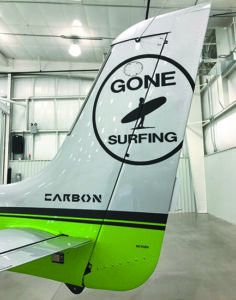
This plane, being a turbo, is equipped with onboard O2 and this year needed a new $4000 tank from Precise Flight because it timed out. I carry portable bottles for backup and redundancy from lessons learned at altitude with bad weather below.
The mod world is not like other aircraft as Cirrus held this thing close to the vest. Most of the good mods have been pulled into the factory so they are only available through Cirrus at a premium. Cirrus is extraordinarily responsive as a company (in my experience) and they are organized in training in a way that you will like or hate depending on your affiliation with self-determination. The biggest beef I have is when the company split from Avidyne to Garmin, and now their support for the Avidyne planes (as far as training is concerned) is zero. You need to find a CSIP who has Avidyne experience if you buy an Avidyne bird. I get it, the Gamin suite is the berries and they want a uniform platform. But they made ‘em, and you are on your own if you want one of the affordable and capable Avidyne models. Insurance has been easy to find. I am 65, multi-instrument-rated with 3000-plus hours and am told I have to fly with an instructor once a year. No problem. It is around $3400 per year for $270,000 hull. Not cheap, but not expensive in my experience, but it is increasing. The S-TEC 55X autopilot is a quantum leap forward from a King 150, but not so good in crosswinds and on an ILS approach.
Annual inspections are not bad as long as nothing goes out of calendar or has an AD or service bulletin, which will add to the base typical rate of $3000. Both of my exhaust manifolds had to be replaced for a newer version, and it was $6500 and set off my CO detector.
Stay off the brakes when taxing when possible, especially with full rudder deflection. The seatbelt airbag AD, the parachute conversion to electric activation, then a Service Bulletin for a parachute ground wire required kits from the factory. The plane has enough systems and complexity and you will pay to maintain them. My mags were leaky this year and I decided to go with a rebuilt one and a SureFly electronic unit. It works great and I think it helps with hot starts—which are a nightmare. I can tell you that after being stuck on the ground for four hours after a fuel stop at an airport that could not conjure a 28-volt charger/jump- starter, you get serious about learning to hot start. After a jillion method tries, mine seems best for this plane. When hot, turn the key with throttle at ¼-inch, mixture cutoff, no fuel pump, slam the mixture full rich as it catches—clenching your cheeks and holding your breath helps. You don’t get a second try without grinding the starter a bunch. Starter replacement comes after that. I now carry a 28-volt APU LiPo pack with an APU plug that spins the prop like a fan.
A cross-country trip in this machine is like sitting in a BMW. Nice seats, big displays with XM weather, ADS-B weather, Stormscope and satellite tunes. The airplane rides out turbulence nicely. The turbo gives us the ability to overfly grungy weather and mountains with aplomb. It is a highly capable machine and my dispatch reliability has been 100 percent. I put in the L3 Lynx ADS-B transponder and can’t say enough good things.

Will I buy another Cirrus? If I do it will be to get the Garmin suite, an extra 12 gallons of gas, better landing gear that’s on the G3 and later. If they stretched it to a six-seater like my former A36, with a turbo diesel, I would do it today, factory new. For now, I have a highly automated and capable IFR cross-country machine that ticks the boxes at this level of GA spending. To get more I will have to double my investment, not go any faster and not be safer for my tribe. So, I am stuck—in a pretty good place with a comfortable, modern machine that I trust.
Kirk Goodell – via email
I fly a 2019 SR22 and sold a 2006 SR22 GTS to purchase this one. I elected a clean-wing model (no TKS) because I reside in South Carolina where icing encounters are seasonal, at best. I also chose not to purchase air conditioning because I don’t need it any time of day in the fall and winter months, I fly early in the morning in the summer when it’s cooler and to avoid convective buildups, plus the fewer accessories strapped to my engine, the less likelihood of something breaking.
My plane’s useful load is 1326 pounds, which means I can load it with 774 pounds of people and cargo, which is comfortably three fit, adult passengers and 100 pounds in the storage bin and 92 gallons of fuel. I’ve yet to learn of another SR22 with a higher useful load.
The Cirrus delivery experience in Knoxville was quite memorable. Three days of training in the new plane were included and I was able to take my family along, which enabled them to get to know a little about the people behind Cirrus. Cirrus Approach is an online learning portal that teaches the Flight Operations Manual as we’ll as other “flying fixes,” which are professional-quality videos. I have 496 flight hours in my 2019 and fly an average of about 150 hours per year. I couldn’t be happier with my plane and its performance.
My annual costs including insurance ($5600), hangar ($4200), maintenance ($1600), annual inspection ($3800) and fuel totals about $25,000, or just under $170 per hour. This doesn’t include capital cost.
I don’t believe there’s a single engine airplane that offers the speed, reliability and low operating costs like the SR22. There’s simply no aircraft that competes with my SR22 for price and economy, speed (182 knots ROP), comfort (seats five), safety (CAPS) and range (1000 NM and 5.5 hours with reserves).
Justin Winter – via email

